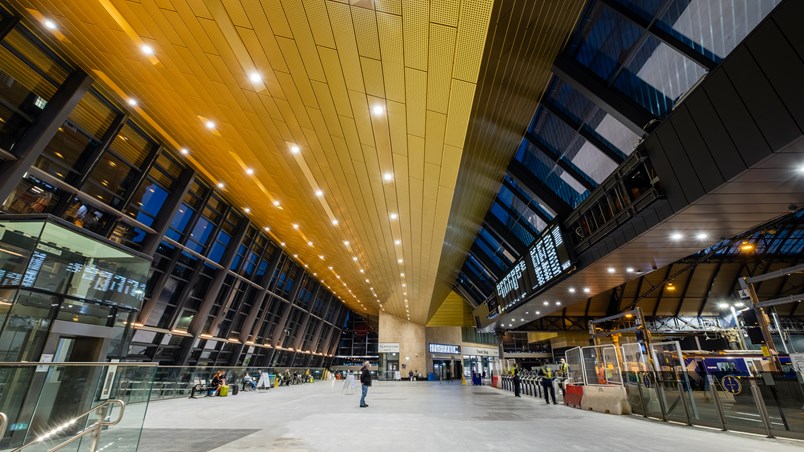The redevelopment of Glasgow’s Queen Street station has significantly improved the experience of the 17 million passengers using the station each year. It has future-proofed the station for the predicted 40% increase in passengers over the next 10-15 years.
Improving Scotland’s rail network
The project is part of a wider programme of works happening across central Scotland’s rail network, the Edinburgh – Glasgow Improvement Programme (EGIP). The programme is being delivered by Network Rail and the Scottish Government to improve services and facilities across the area.
Working alongside our customer, Network Rail, we’ve made significant improvements to Queen Street station to tackle potential overcrowding and improve facilities.

The redevelopment has made it easier for people to navigate throughout the station through the £120 million expansion to extend the platform and concourse, allowing more space for passengers. New facilities were also added to improve visitor’s experience including accessible toilets, a luggage area, ticketing office and space for retail.
Maintaining operations
A significant challenge of the project was the scale, complexity, and ambition of the redevelopment along with the need to keep the station open for around 47,000 passengers who use it each day. We did this by ensuring work was carried out behind fully encapsulated scaffolds and protective hoardings, using night shifts as required. This also helped reduce dust and noise pollution.
To maintain the safe and continuous operation of the station, works were phased.
expansion
platform extension
Phase one included the significant demolition of some of the existing buildings, including the front of the station. Next, the team were tasked with constructing the newly extended concourse and a new basement, this then allowed the erection of the steel frame to enable the platforms to be extended. The 26 metre platform extension means the station can now accommodate longer trains and a higher footfall.
Utilising Building Information Modelling (BIM)
BIM was used to improve project delivery. The team utilised it to undertake a full clash detection and co-ordination review as well as for 4D planning to review work progress. A virtual walkthrough was also used and BIM 360 field allowed snags to be flagged, site diaries to be kept and quality control to be maintained.